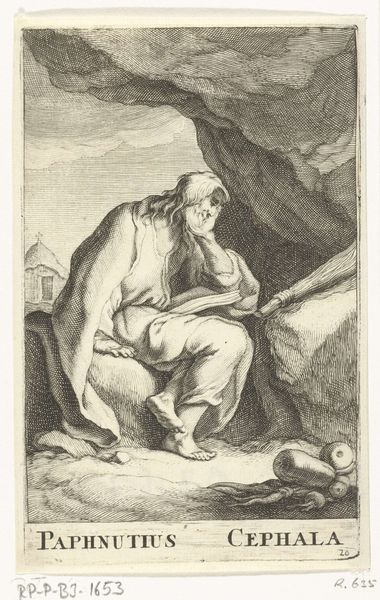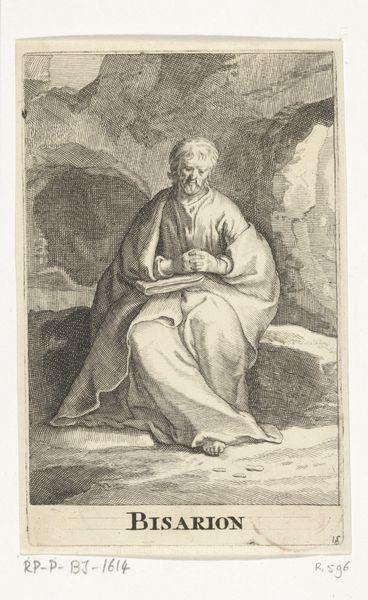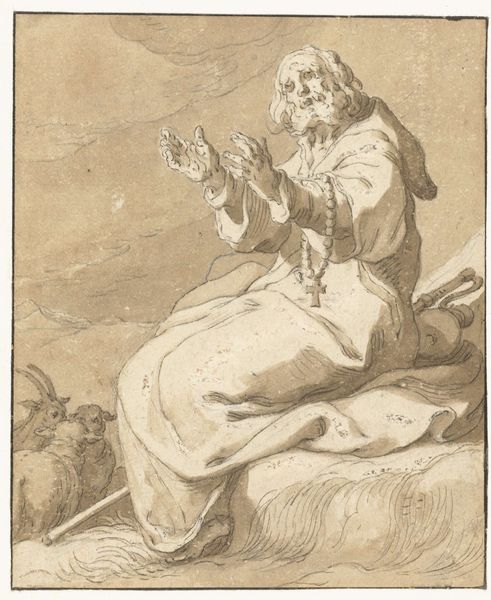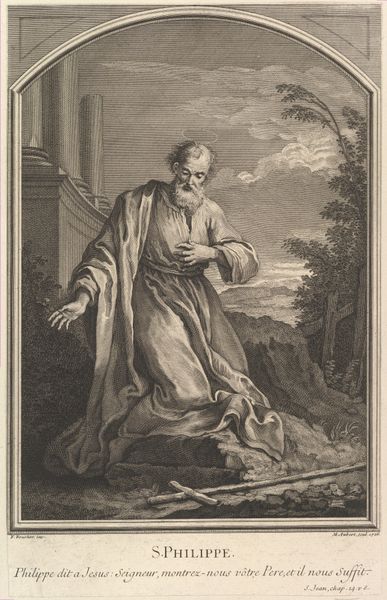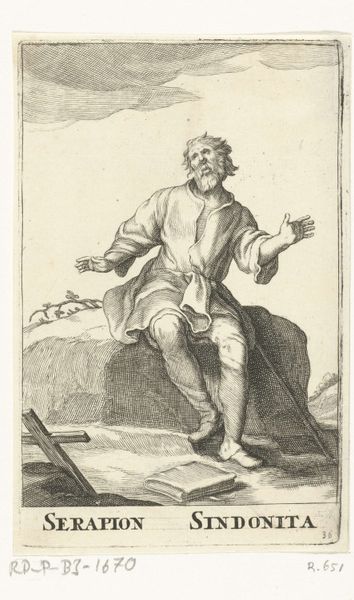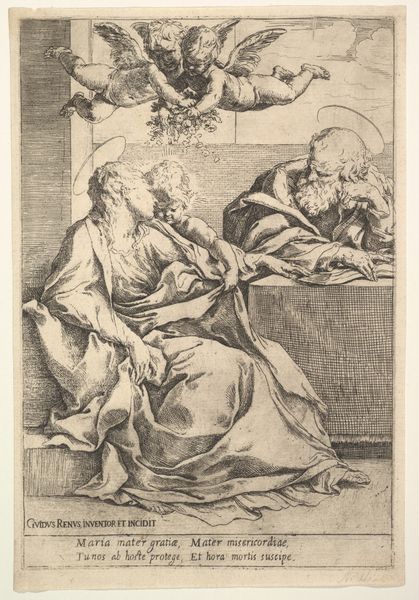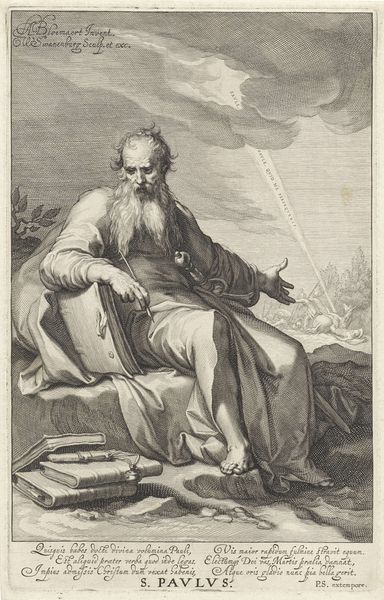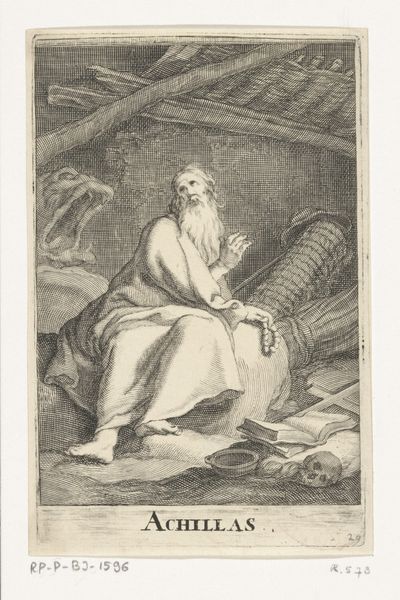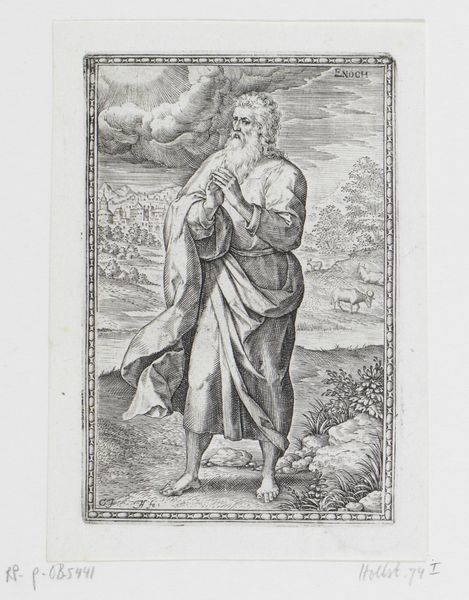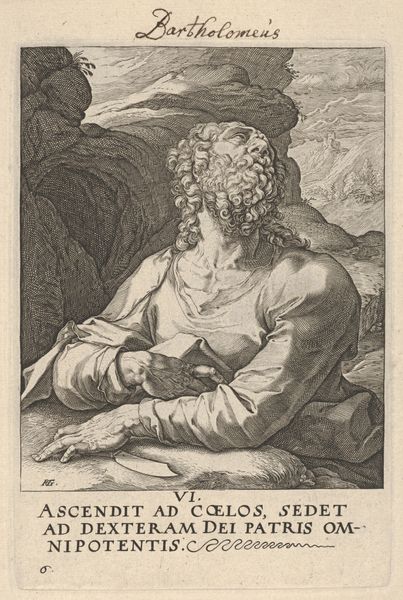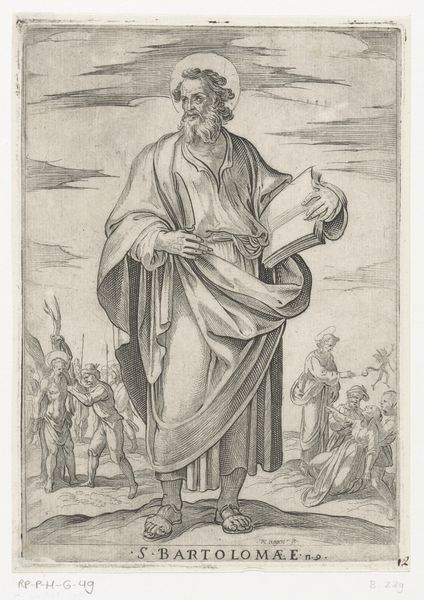
print, engraving
#
portrait
#
baroque
# print
#
history-painting
#
engraving
Dimensions: height 135 mm, width 85 mm
Copyright: Rijks Museum: Open Domain
Frederick Bloemaert created this print, Heilige Elias Antinous, using engraving, a process where lines are incised into a metal plate and then filled with ink to make the final image. Consider how this technique influences the work's appearance: the density and direction of the engraved lines create shading and texture, defining the forms of Saint Elias and his surroundings. The precision required for engraving means Bloemaert had complete control, allowing him to render fine details, like the saint's beard and the texture of the stone wall. Engraving was a popular method for printmaking as it allowed for relatively large editions, facilitating the broad distribution of images. In this context, printmaking could be seen as a form of visual communication, spreading religious or moral messages to a wide audience. So, think about the amount of labor involved, and the social function of this kind of image at the time. Understanding these factors helps us appreciate the artistic intention and cultural impact of works like this, challenging any rigid separation between artistic expression and wider cultural context.
Comments
No comments
Be the first to comment and join the conversation on the ultimate creative platform.

